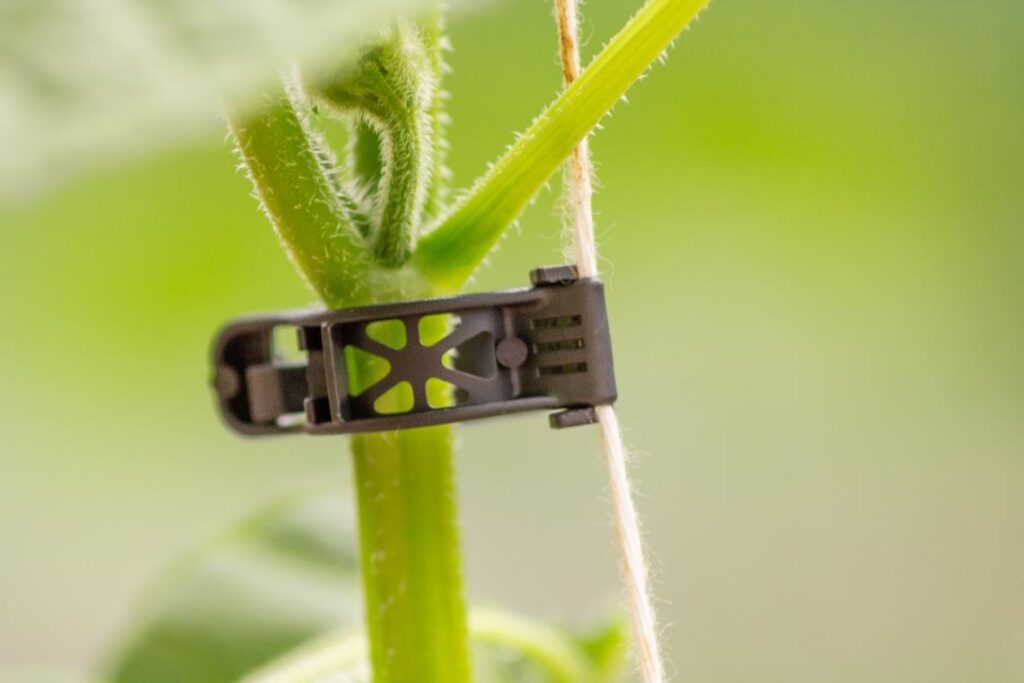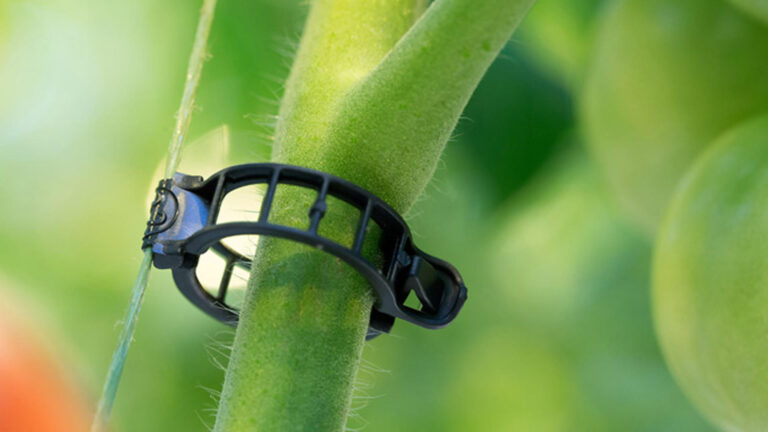The global agricultural landscape is witnessing a pivotal shift towards sustainability, driven by the pressing need to minimize environmental impact and ensure the long-term viability of food production. Within this realm, innovations in greenhouse technologies are playing a crucial role.
Among these advancements, the emergence of biodegradable clips stands out as a beacon of eco-conscious solutions that support sustainable cultivation practices.
What Are the Benefits of Using Biodegradable Clips in Greenhouse Cultivation?
Plastic clips have been a staple in greenhouse agriculture for their role in securing plants to various support structures like trellises or wires. These clips serve a crucial function in stabilizing plants, aiding in their growth, and optimizing space utilization within the greenhouse. However, their widespread use comes with significant environmental drawbacks.
Durability and Non-Biodegradability: Conventional plastic clips, typically made from polyethylene or polypropylene, are durable and long-lasting. Unfortunately, this very quality becomes a detriment once these clips are discarded.
They don’t naturally decompose or degrade for hundreds of years, contributing to persistent plastic pollution.
Environmental Impact: The accumulation of plastic clips in agricultural settings results in soil contamination, hindering microbial activity and affecting soil health.
Moreover, these clips can break down into microplastics, further exacerbating environmental issues by entering the food chain and water sources.
Ecosystem Consequences: Plastic pollution from greenhouse agriculture doesn’t just affect the immediate environment but also impacts larger ecosystems.
Plastic waste can leach harmful chemicals into the soil and water, posing threats to wildlife and disrupting delicate ecological balances.
Biodegradable Clips

In response to these environmental challenges, the development and adoption of biodegradable clips represent a significant shift towards sustainability in greenhouse cultivation.
Material Composition
Biodegradable clips are crafted from biopolymers sourced from renewable materials such as corn starch, vegetable oils, or other natural compounds. These materials undergo processes that enable the clips to break down naturally when exposed to environmental conditions like heat, moisture, or microbial activity.
Eco-Friendly Decomposition
Unlike traditional plastic clips, biodegradable alternatives break down into non-toxic components. They degrade into natural elements, such as carbon dioxide, water, and organic matter, without leaving behind harmful residues or microplastics.
Reduced Ecological Footprint
The use of biodegradable clips significantly reduces the environmental impact associated with greenhouse cultivation. By minimizing plastic waste, these clips contribute to healthier soil, cleaner water, and overall ecosystem preservation.
Advantages and Challenges
While biodegradable clips offer promising solutions, several considerations impact their widespread adoption:
Ensuring that biodegradable clips possess sufficient strength and durability comparable to their plastic counterparts remains a challenge. Innovations in material science aim to enhance these properties while maintaining eco-friendliness.
At present, biodegradable clips might have a slightly higher initial cost than traditional plastic clips. However, economies of scale, technological advancements, and increased demand can potentially reduce costs over time.
Educating and encouraging growers about the benefits and proper disposal methods of biodegradable clips are essential. Wide-scale adoption requires awareness campaigns and support from the agricultural community.
What Are the Challenges and Future Outlook for This Topic?
While challenges persist in the adoption of biodegradable clips in greenhouse cultivation, ongoing research, innovation, and collaborative efforts across various sectors hold promise for addressing these challenges.
Challenges
One of the primary challenges is ensuring the scalability of production for biodegradable clips. Meeting the demand for these clips on a large scale while maintaining quality standards and cost-effectiveness poses a significant hurdle. Scaling up production processes without compromising the integrity of the biodegradable materials remains a key challenge.
Biodegradable clips need to exhibit durability comparable to traditional plastic clips to withstand the rigors of agricultural use. Ensuring that these clips maintain their structural integrity and functionality over extended periods in varying environmental conditions, such as exposure to moisture, UV radiation, and mechanical stress, remains a concern.
Furthermore, the mechanical strength of biodegradable clips is crucial for effectively securing plants to support structures. Ensuring that these clips have adequate strength to support plant growth, withstand wind, and maintain stability throughout the growing season is a challenge that needs to be addressed.
Future Outlook

Ongoing research and development initiatives are focused on overcoming these challenges associated with biodegradable clips. Advances in material science, polymer technology, and manufacturing techniques aim to improve the durability, strength, and overall performance of biodegradable materials used in clip production.
Innovations in material science focus on developing biopolymers or composite materials that offer improved durability and mechanical strength while retaining biodegradability. Tailoring these materials to withstand various environmental factors and agricultural conditions is a key aspect of ongoing research.
Efforts are being made to make biodegradable clips more cost-competitive with traditional plastic alternatives. Innovations in manufacturing processes and economies of scale are expected to drive down production costs, making biodegradable clips a more economically viable option for greenhouse growers.
Collaboration between researchers, agricultural practitioners, policymakers, and industry stakeholders is crucial. Creating a supportive ecosystem that fosters innovation, encourages adoption, and provides incentives for sustainable practices in agriculture will be instrumental in overcoming challenges and promoting the widespread use of biodegradable clips.
Policymakers play a vital role in incentivizing the adoption of sustainable solutions like biodegradable clips. Policies supporting environmentally friendly agricultural practices, providing research grants, and promoting awareness can facilitate the integration of these solutions into mainstream agriculture.
FAQ’s
What is the strongest biodegradable material?
Some biodegradable materials, like PHA (Polyhydroxyalkanoates) and certain blends of PLA (Polylactic Acid), exhibit high strength and durability, making them among the strongest biodegradable materials available.
Is biodegradable more expensive than plastic?
Biodegradable materials can often be more expensive than conventional plastics due to production costs, limited scalability, and specialized manufacturing processes involved in creating biodegradable alternatives.
Is biodegradable good or bad?
Biodegradable materials are beneficial for the environment as they break down into natural elements, minimizing plastic pollution. However, their production, disposal, and effectiveness in various conditions require careful consideration for their overall impact.
Are bioplastics cheaper than plastic?
Generally, bioplastics can be more expensive than traditional plastics due to the costs associated with sourcing renewable materials and specialized production techniques. However, with advancements in technology and increased demand, costs may become more competitive in the future.
What are the problems with biodegradable packaging?
Biodegradable packaging faces challenges related to consistent decomposition rates, the need for specific environmental conditions for breakdown, potential contamination issues, and the lack of standardized disposal systems.
Conclusion
In a world where sustainable practices are becoming imperative, the integration of biodegradable clips in greenhouse cultivation represents a significant step towards achieving environmental stewardship in agriculture. These innovative clips offer a practical and eco-conscious alternative to conventional plastic counterparts, aligning with the global movement towards a more sustainable future.
As research and innovation continue, the widespread adoption of biodegradable clips holds promise in transforming greenhouse agriculture into a more environmentally friendly and sustainable industry.

